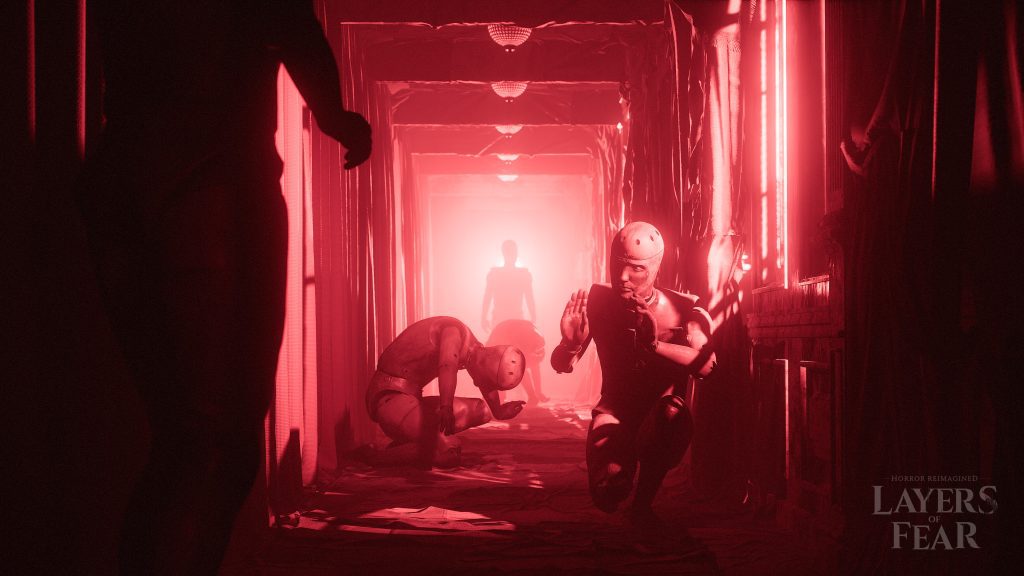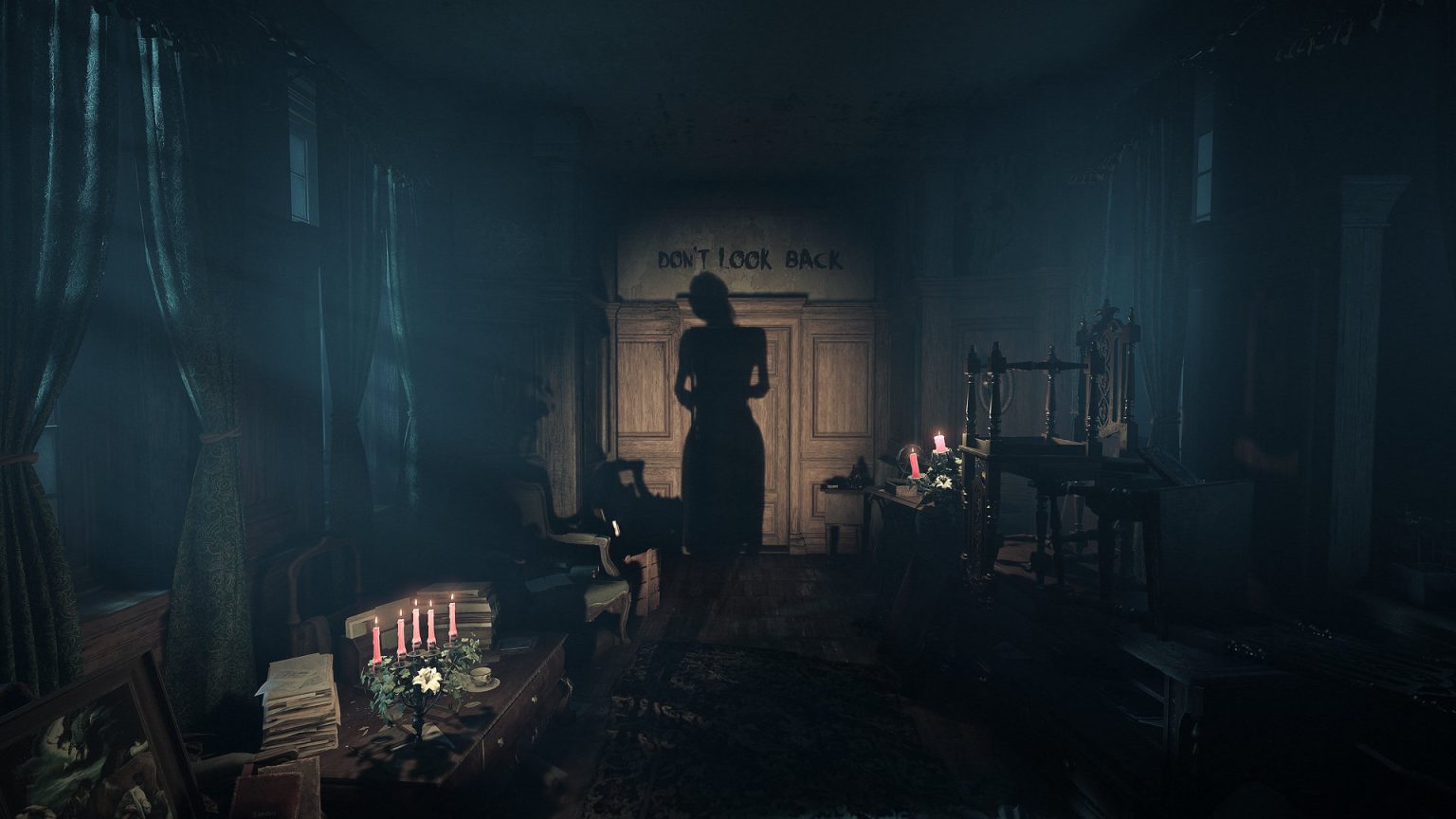Developer Bloober Team has kept busy designing and releasing horror experiences. Since 2016, the studio has released six horror games with three more (including the highly anticipated remake of Silent Hill 2) currently in development.
Layers of Fear (2023) is positioned strangely in the studio’s horror ludography. The game recreates, reimagines, and remakes both Layers of Fear (2016) and Layers of Fear 2 (2019).
In doing so, Layers of Fear (2023) weaves together the story of artists and families. Players will return to the roles of the Painter, the Actor, the Daughter, and the Musician from the original games and their DLCs. Additionally, the 2023 title introduces a frame narrative—that of the Writer—which acts as the connective tissue for this horrific tapestry.
Layers of Fear (2023) left me in a strange position as it nailed a haunting atmosphere and aesthetic, but it almost always keeps its horrors just beyond arm’s length.

Horror in the Abstract
Layers of Fear (2023) isn’t traditionally terrifying. There are a few jump scares and some truly spine chilling imagery. For the most part, the game presents horror as an abstraction. The idea of horror is never far away. The player will often enter a room, hallway, or loft only to turn around and find that the area they just saw has vanished or transformed. Sometimes this effect is as simple as the door is now closed and locked. Most of the time, the space transforms and shifts as a new hallway or room appears.
Bloober Team uses this aesthetic to mesmerizing effect, often awe-inspiring early in the game. From the decaying aesthetic of the haunted house to the entropic transformation of the ship, the expectation of horror to unsettle the player is always a turn away.
However, this transformation is also overused. The game design depends on it so often across the different narratives that players come to expect it. The horror element continues without much substance.
This isn’t to say that there aren’t ghosts or the occasional hostile entities to pursue (and even harm) the player. But these ghosts and entities themselves feel formless or inconsequential. By the end of the first story (the Painter’s), I didn’t fear the arrival of the ghost as much as I dreaded how the entity would hinder my progress. This frustrating dread never ceased.
A Narrative-Driven Tech Demo
Layers of Fear (2023) is a great technical showcase for what horror games can look like in Unreal Engine 5. There were moments during my playthrough when I felt like I was playing a CGI-rendered announcement trailer. The environments are well-detailed—an impressive feat considering how quickly they change and shift. The player’s immersion rarely breaks because of technical limitations.

Loading in Layers of Fear (2023)
Loadscreens are virtually non-existent while traversing the game’s decaying spaces. The only times when the game forces players into load screens are during key moments of transition where they are not simply walking through a door to enter the chapter. These load screens serve as chapter bookmarks, giving clear signposting of what chapter is being entered and in whose story.
It’s worth noting that, on rare occasions, the pathway forward did not load properly during my playthrough. Either an item didn’t spawn that was required to move forward or a large object simply didn’t load appropriately and blocked my way forward. These moments were always fixed by returning to the title menu and reloading the game.
Strengths of Layers of Fear (2023)
The sound design ties everything together in a memorable and eerie way. There were moments where I had to remove my PULSE 3D wireless headset because I had to make sure that the creaky floorboards were in fact coming from the game and not my own house. The musical cues invoke layers of suspense, expectation, and fear.
This is the best way to experience the stories of Layers of Fear (2016) and Layers of Fear 2 (2019). The stories of the two games are largely the same as their original releases. While a little trope heavy, the stories accompanied by the new frame narrative of the Writer in the Lighthouse are just engaging enough to keep players moving through this haunted technical showcase.

Final Thoughts
Layers of Fear (2023) exists in a weird position in Bloober Team’s ludography. The game is in essence a remake of its first horror game and its sequel. It sits between its latest new IP The Medium (released in January 2021) which was a launch window game for the Xbox Series X/S, and their take on the classic Silent Hill 2 (expected later this year). Layers of Fear (2023) fills me with cautious optimism about the latter.
I wanted to like Layers of Fear (2023). I leisurely traversed the haunted house (and ship) for around fifteen hours, but its horror elements never truly left the realm of abstraction. I walked away fascinated by the spaces and objects left behind by the game’s characters. They left a residue of horror. But I left frustrated by how little this residue manifested in truly terrifying, concrete, or meaningful ways.
Score: 7.0/10
Layers of Fear (2023) from Bloober Team was released on June 15, 2023, on PlayStation 4 and 5, Xbox One, Xbox Series X/S, PC, and Mac.
Clint is a writer and educator based out of Columbus, OH. You can often find him writing about Middle English poetry, medieval games, or video games. He just finished a PhD in English at the Ohio State University. You can find his academic and public work at clintmorrisonjr.com.










